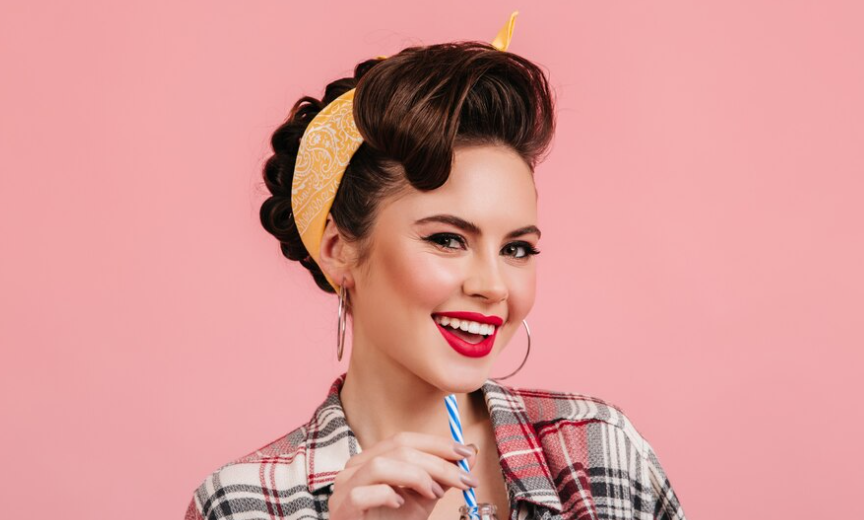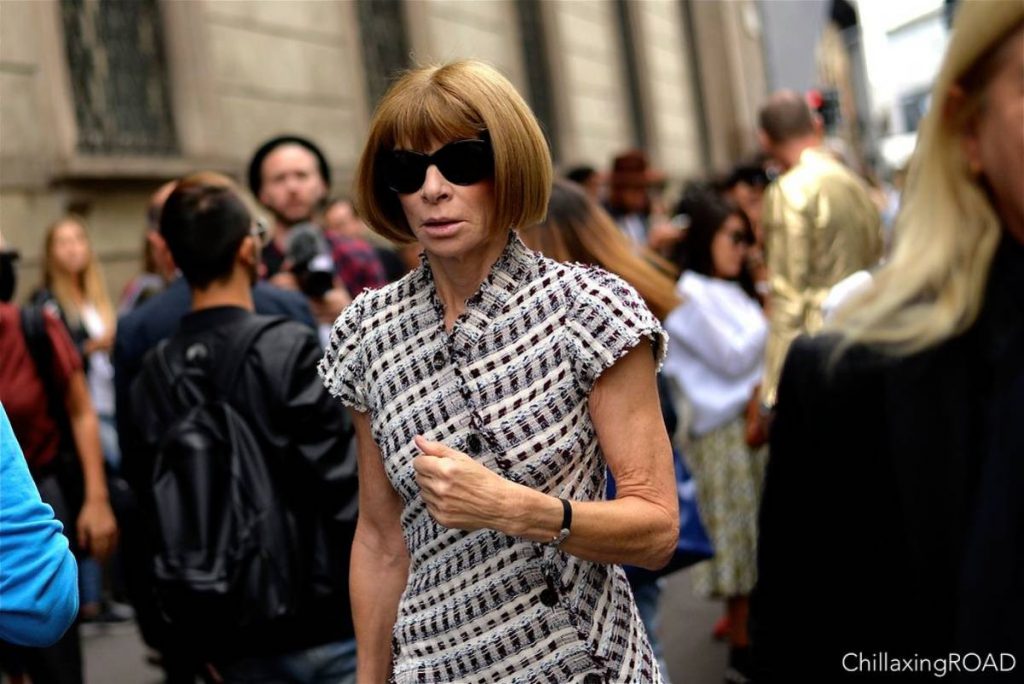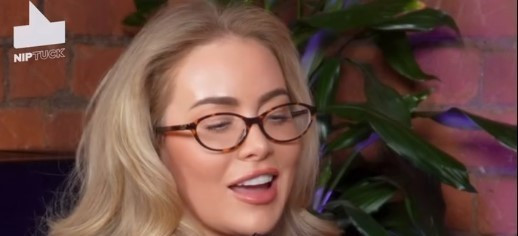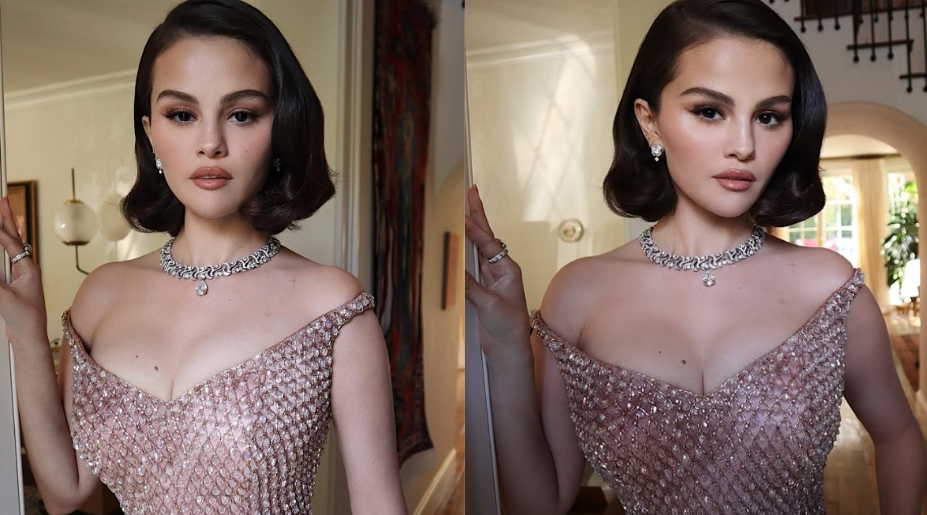These 50s Hairstyles Are Coming Back for More!

© lookstudio / Freepik
The Cold War did not stop the 50s from producing these hot hairstyles. The decade of rock and roll, movies, and TV, helped this generation compile a steady set of fashion statements and hairdos. From Amy Winehouse to Jackie Kennedy, the 50s hairstyles we know of today, have officially managed to stand the test of time! Which hairstyles survived the chopping block, and are being resurrected this year? Let’s find out together!
Top Ten 50s Hairstyles That You Need to Try Out
Here are the top 50s hairstyles that are making a comeback:
1. The Bee Hive
The 1950s marked a period defined by the popularity of wigs and voluminous hairstyles. Among these, the iconic bee hive hairstyle stood out as a timeless classic. This distinctive look was known for its height and structured appearance, achieved through the art of backcombing and generous applications of hairspray. Similar to other fashion trends of the era, this style featured a voluminous crown. It also included a strong and well-defined silhouette, and the sides of the hair pinned up.

Prominent figures such as Aretha Franklin and Jackie O. were notable for adopting the bee hive hairstyle. Fast forward to the present day, contemporary celebrities like Beyoncé, Mary J. Blige, and Adele have reintroduced this vintage style to the limelight by flaunting it on prestigious red carpets worldwide. Their embrace of the bee hive hairstyle reflects its appeal and the elegance it brings to the world of fashion and beauty.
2. The Poodle
This distinctive hairstyle is originally known as the “bubble cut” and more recently referred to as “pineapple hair”. It showcased short, closely curled hair reminiscent of a poodle’s fur. This style was particularly well-suited for women with naturally curly hair. Additionally, it gained widespread popularity through the influence of Hollywood actresses such as Lucille Ball and Peggy Garner.

To achieve this charming look, one would typically start by leaving pillow rollers in their hair overnight. Then, to create the iconic curly updo at the front, a teasing comb and volumizing spray would be applied at the crown of the head. Afterward, bobby pins were used to secure the curls in place. This hairstyle not only offered a playful and retro aesthetic but also celebrated the beauty of natural curls. This made it a timeless choice for those seeking a unique and fashionable hairdo.
3. The Pixie Cut
Yes, you have read that right! Although you have definitely seen a pixie cut before, it has actually been a thing since the 50s! The 1950s witnessed the rise of short hair as a defining trend in women’s hairstyles. One of the notable styles that emerged during this era was the gamine look. It was characterized by boyish or elfish haircuts that challenged the notion that women needed long locks to exude femininity.

The pixie cut, in particular, gained prominence during this time. It is distinguished by its short back and sides, with longer hair in the front. Some individuals opted for bangs, while others embraced a spikier appearance. Typically, the hair length for this style was less than 3 inches, emphasizing its minimalistic and practical nature. However, those who wanted a twist could use the curly pixie. It was reminiscent of a shorter version of the Italian cut, allowing for slightly longer hair when the curls were artfully layered.
These short hairstyles not only made a bold fashion statement but also celebrated the idea that women could maintain their femininity with more streamlined and pragmatic haircuts, ushering in a new era of versatility and self-expression in hair fashion.
4. The Italian Cut
This distinctive style showcased loose curls, resembling the curls of a poodle cut. The difference is that the Italian cut has a more relaxed and natural appearance. Its versatility was a key feature, making it flattering for a variety of face shapes, as the curls beautifully framed the cheeks and forehead.
The back of this hairstyle allowed for personalization, with women having the option to either maintain a shaggy and textured look at the nape of the neck or opt for a more structured bob cut. This flexibility in the rear of the hairstyle added an element of individuality, allowing each person to tailor the look to their unique preferences.

This short and messy hairstyle, influenced by the elegance of Italian cinema, captured the essence of sophistication and charm while providing women with an array of options to express their personal style and showcase their beauty.
5. The Victory Roll
During World War II and the 1950s, a hairstyle known as “Victory rolls” became an iconic and enduring symbol. This distinct hairstyle made its mark in numerous Hollywood films from the era. Its name is derived from the aviation maneuver known as a “victory roll,” a horizontal rolling maneuver that was symbolic of celebration and victory during the wartime period.
To achieve Victory rolls, the process involved splitting the hair into two even sections and then rolling these sections upwards on each side of the part. Importantly, the rolls did not need to be precisely symmetrical on both sides, allowing for a degree of creative variation. This style not only added a touch of vintage glamour but also served as a visual representation of the resilience and spirit of the times.

The Victory Roll hairstyle, with its historical significance and distinctive appearance, remains a cherished symbol of the wartime era and Hollywood glamour, reflecting the spirit of celebration and triumph that defined that period.
6. The Pageboy
In alignment with the gamine cuts of the 1950s, the pageboy hairstyle offered a distinctive and elegant choice. This hairstyle showcased straight hair that hung just below the ear, with the ends turned inward. Its inspiration was drawn from the boyish appearance of medieval servants, adding a touch of historical charm to modern fashion.

The pageboy style is particularly recognizable for the prominent fringe in the front, which sets it apart from other classic cuts. One key distinction between the pageboy and the bob haircut is in the edging; the pageboy features blunt-cut edges that curve inwards, rather than having an upward slant. This inward curve contributed to the hairstyle’s neat and polished appearance.
Regarding length, the pageboy haircut offered versatility, ranging from just below the nape of the neck to a length extending just below the shoulder. This range allowed individuals to adapt the style to their preferred level of sophistication and comfort.
7. The Wavey Cut
This glamorous hairstyle captures the essence of old Hollywood glamour. The technique behind this style involves curling the hair away from the face and then brushing it out to create loose and flowing waves.
One of the key features of this style is its compatibility with long hair. In fact, the longer the hair, the more dramatic and striking the effect. The length of the hair allows for the waves to cascade beautifully, emphasizing the elegance and allure of this classic look.

Whether it’s called glam waves, Hollywood waves, or Jessica Rabbit waves, this hairstyle has consistently represented the epitome of sophistication and red-carpet glamour. Its timeless appeal continues to be a go-to choice for those seeking a touch of vintage allure and elegance in their appearance.
8. The Pompadour
The pompadour hairstyle, which is named after Madame (or Duchesse) de Pompadour, the mistress of King Louis XV of France from 1721 to 1764, has a rich history. In the 1950s, it experienced a resurgence in popularity, thanks in part to iconic figures like pin-up sensation Betty Grable and the legendary rock ‘n’ roll entertainer, Elvis Presley. One notable aspect of this hairstyle is its unisex appeal, making it suitable for both men and women, contributing to its enduring popularity.

The essence of the pompadour hairstyle lies in its versatility for styling and barbering, which explains why it has never gone out of style. This voluminous hairdo retains the front section of hair at a longer length and then elegantly sweeps it backward off the forehead to create a distinctive roll. Achieving this look involved different techniques for men and women. Men typically brushed their front hair backward to create the pompadour effect, while women had the option to use pads or other hair accessories to achieve the raised pompadour look, adding an element of creativity and personalization to the style.
9. The Bob Cut
The bob hairstyle, known for its timeless appeal, has seen countless variations over the years. However, during the 1950s, a few specific bob styles gained particular prominence, each with its unique charm. These included the Italian bob, characterized by sculpted curls that gracefully framed the face, the French bob, which featured ends that flared out, and the faux bob, a clever illusion where longer hair was curled and tucked under to create the appearance of shorter hair.

While these 50s hairstyles held sway during their era, popular bob cuts have continued to evolve. Notable additions to the repertoire include the soft bob, distinguished by its gentle waves rather than tight curls, and the flipped bob, which featured a striking change in direction where the ends of the hair gracefully curled outward.
10. The Bouffant
One of the most iconic 50s hairstyles, the bouffant, takes its name from the French word “bouffant,” which means puffed-out or voluminous. An interesting tidbit is that the bouffant was a significant source of inspiration for the beehive hairstyle, a common misconception due to their similarities.

The classic ’50s bouffant had a distinctive appearance, featuring a tousled look that resembled a shaggy cut. However, the key distinguishing feature was the elevation of the hair, which was styled high on the top of the head while covering the ears and cascading down the sides. To achieve this glamorous look, individuals would typically start by putting their hair in large mesh rollers, allowing it to air dry. Then, the hair was backcombed or teased to create impressive height on both the top and the sides, giving it that signature puffed-out appearance. To maintain the style’s structure and volume, copious amounts of hairspray were applied.
What are your favorite 50s hairstyles on the list? Are there any you want to try out soon? Let us know down below!


